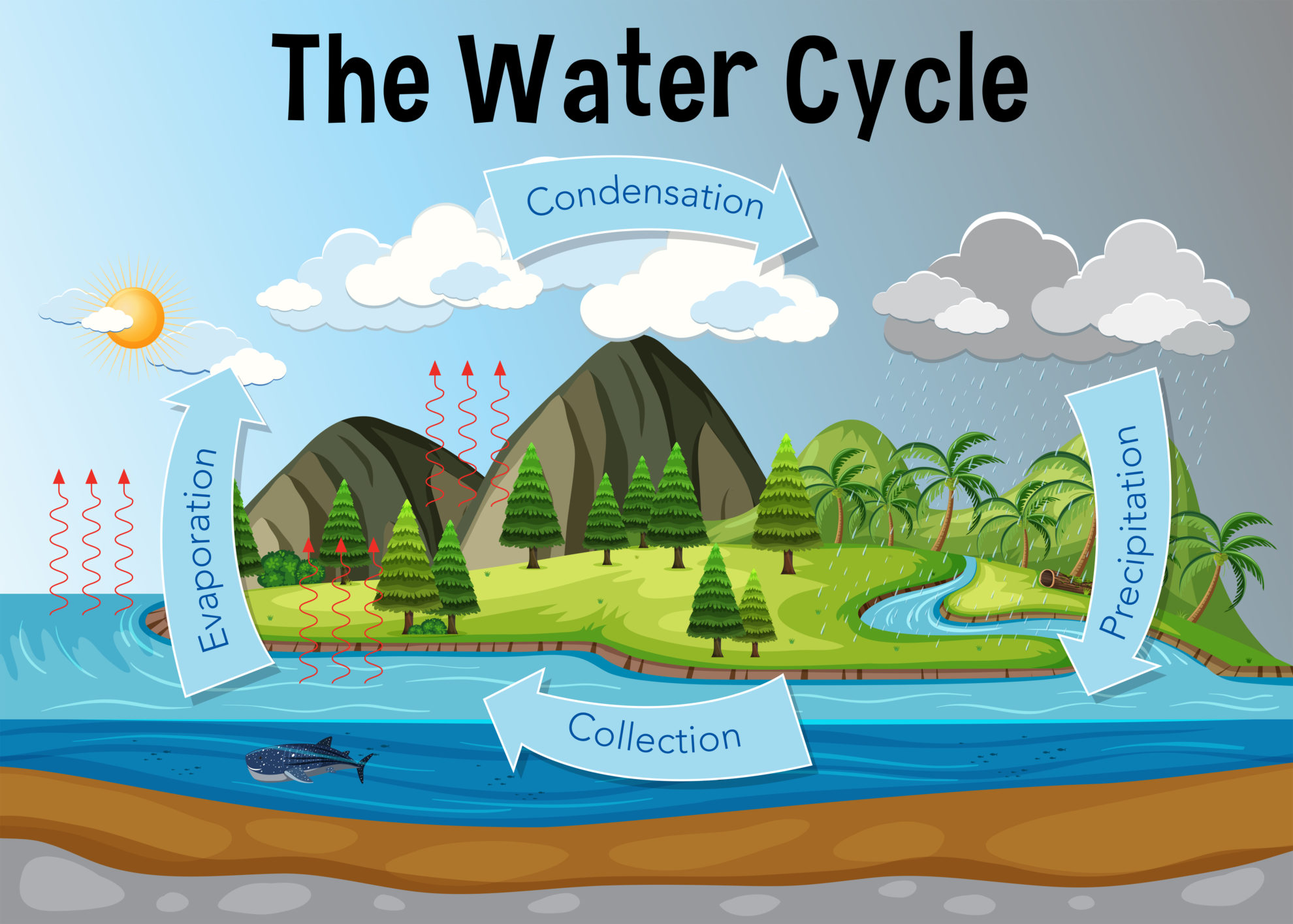
The Water Cycle Biology Online Tutorial
Infiltration is defined as the downward entry of water into the soil or rock surface and percolation is the flow of water through soil and porous or fractured rock. So percolation is form of infiltration.
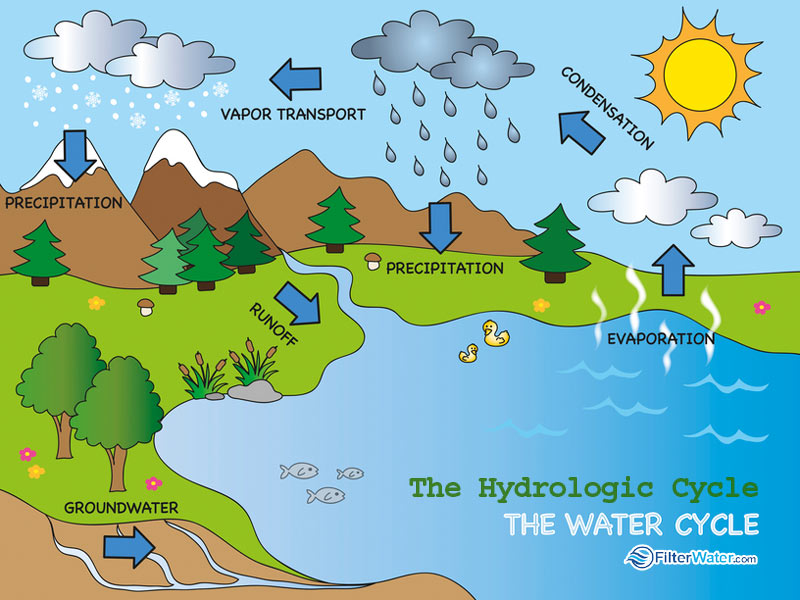
What is Water?
In this lesson, students will explore how water is continually cycled among land, the oceans, and the atmosphere. As students build a physical model of the water cycle, they will be able to simulate and observe evaporation, condensation, precipitation, and other water cycle processes in real-time. Remote learning: This lesson plan can be.
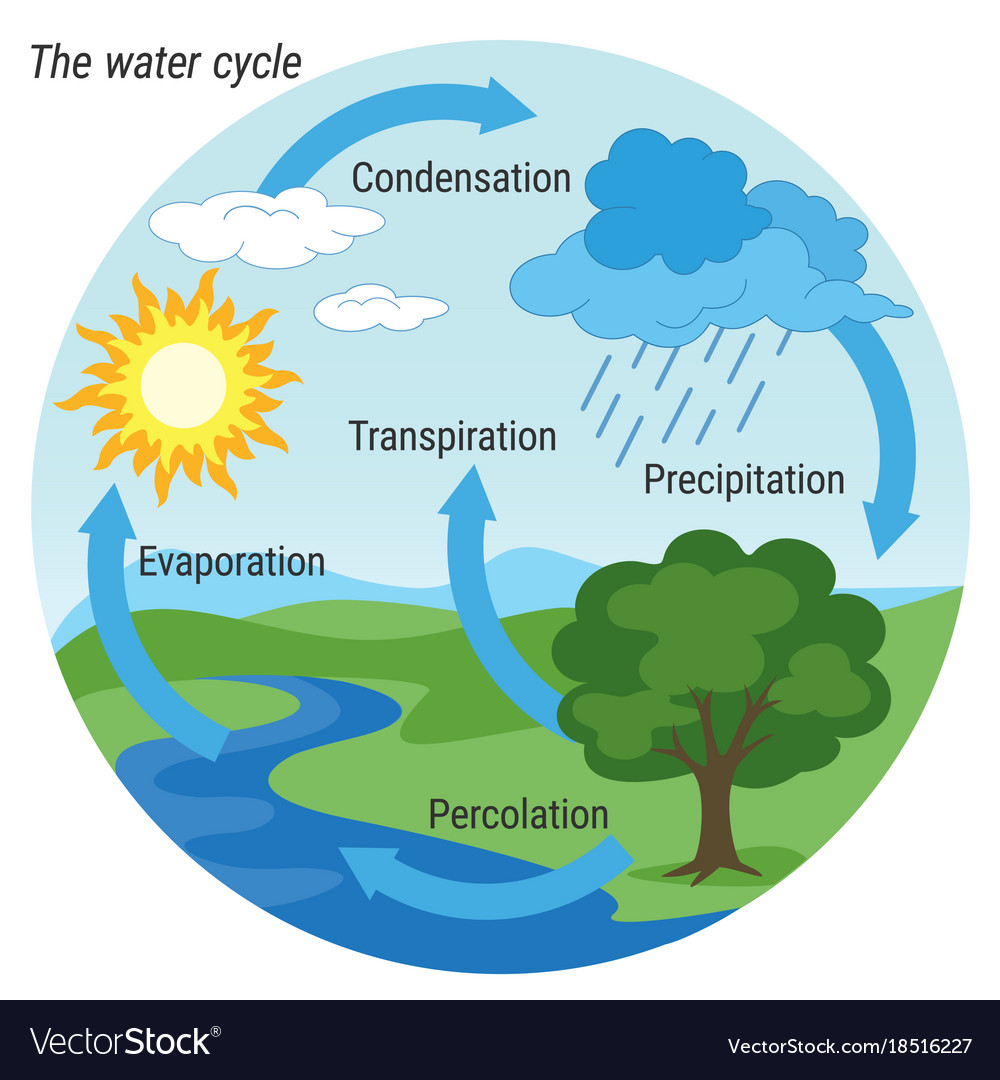
16+ Water Cycle Diagram With Explain PNG Diagrams
The water cycle is also known as the "hydrologic cycle". Precipitation. When too much water has condensed, the water droplets in the clouds become too big and heavy for the air to hold them. And so they fall back down to Earth as rain, snow, hail or sleet, a process known as "precipitation". Collection

Water Cycle Different Stages of the Water Cycle and Explanation
The runoff and streamflow steps of the water cycle play an important part in making sure water gets back into the oceans to keep the water cycle going. Below is a simple water cycle drawing will help you understand the different phases of the hydrologic cycle diagram and its explanation. (Image to be added soon)
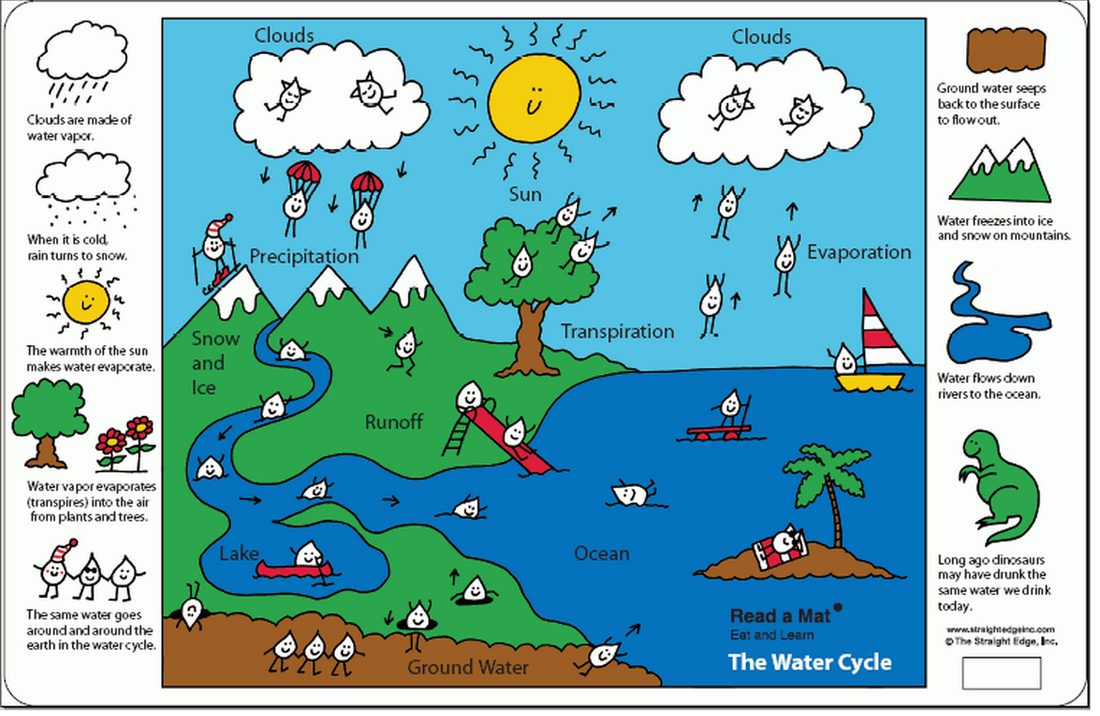
6th Grade The Water Cycle! Ms. Sylvester's Science Page
water cycle, cycle that involves the continuous circulation of water in the Earth - atmosphere system. Of the many processes involved in the water cycle, the most important are evaporation, transpiration, condensation, precipitation, and runoff.
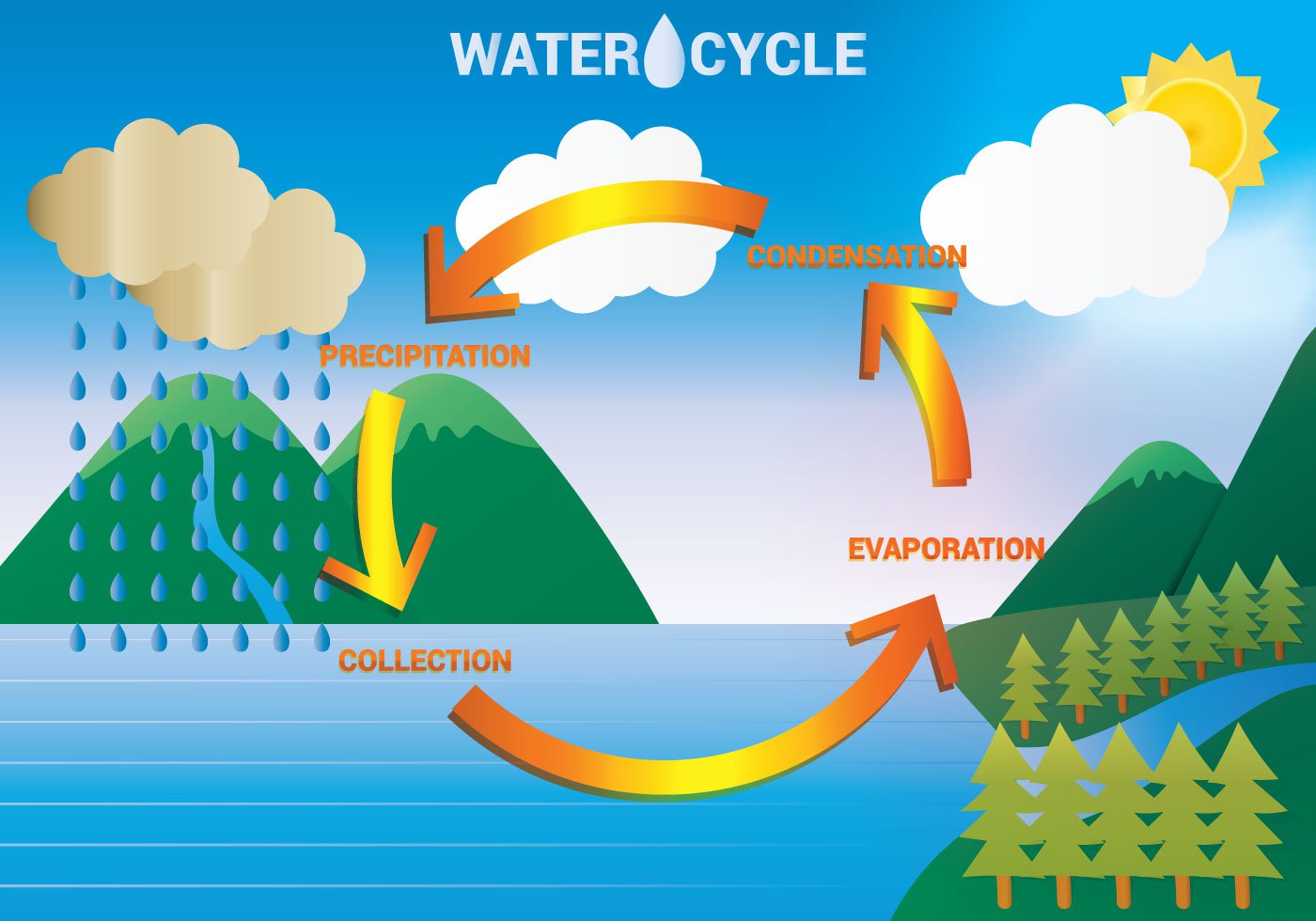
What is the water cycle? The Water Cycle
The Water Cycle refers to the continuous movement of water through the earth and atmosphere in various states-. The different stages of the Water Cycle are Evaporation, Condensation, Precipitation, and Collection. The Water Cycle is important to us as we need it for our day-to-day activities. It also serves as the life source for various organisms.
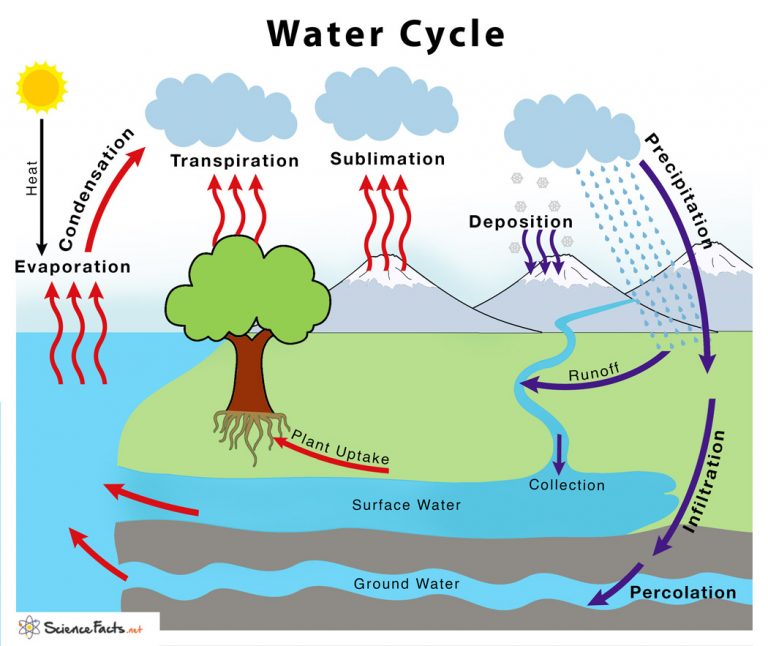
Water Cycle Definition & Steps Explained With Simple Diagram
The water cycle, also known as the hydrologic cycle or the hydrological cycle, describes the continuous movement of water on, above and below the surface of the Earth. Water Cycle Diagram During this process, water changes its state from one phase to another, but the total number of water particles remains the same.

Share it! Science "Choose Your Own" Water Cycle or Rock Cycle Story Template
Water Cycle: Definition, Process & Significance. Water cycle is known as the hydrologic cycle. It is a continuous process that involves movement of water to the core of the ground from the earth's surface. Water is considered the main source of life. About 70 % of the earth consists of water out of which 97.5 % is present in oceans as.

10+ Water Cycle Diagram To Label And Color PNG Anatomy of Diagram
Beginner Intermediate Advanced Sources/Usage: Public Domain. This is a screenshot of one of our interactive water-cycle diagrams. Click one of the levels above to start exploring! Our interactive diagrams allow you to "mouse around" the parts of the water cycle and view explanations, pictures, and more.
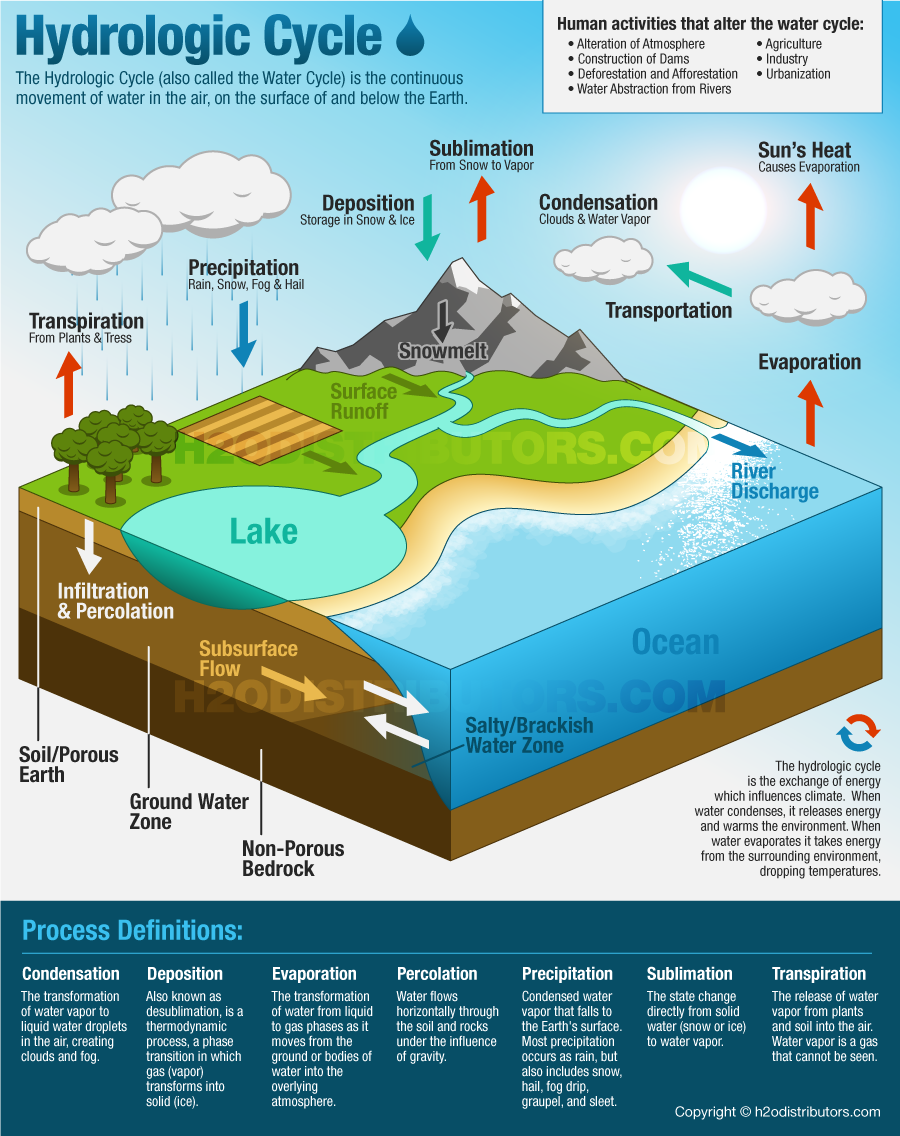
Hydrological cycle GEO CAR. /SOCIAL STUDIES
The water cycle is critical to all animals and life on Earth. All animals need to take in water, use it, and get rid of the excess—animals have their own mini-water cycle going all the time. And some, like this parrot, have even learned to use a park drinking fountain when they need a drink. There is one creature on Earth that does have a.
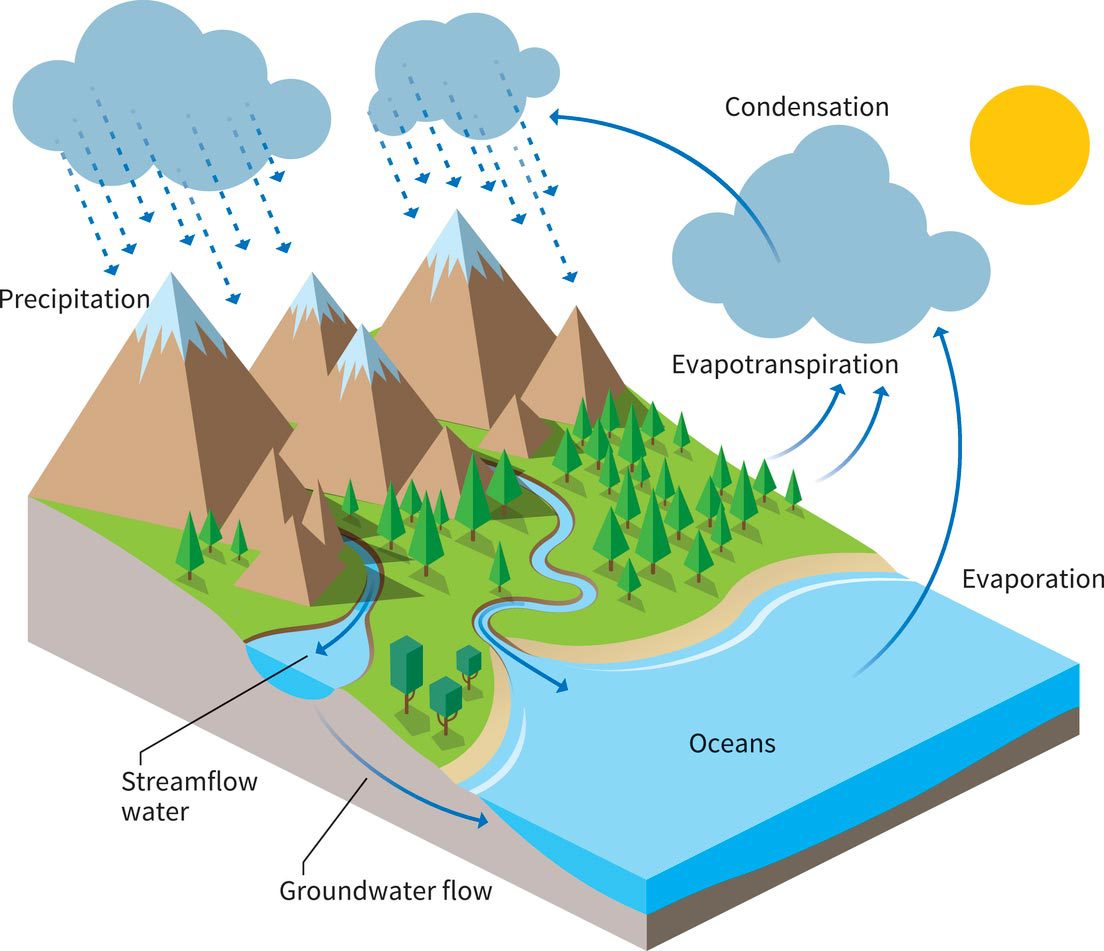
Water Cycle North Penn Water Authority
1. Evaporation of Water The water of the reservoirs like oceans, seas, lakes, etc gets evaporated. Most importantly, it is the first step of the process. The water from the source gets absorbed by the heat energy of the sun. The evaporation helps in maintaining the temperature of the bodies. 2.Condensation It is the second step of the process.

IXL Label parts of water cycle diagrams 6th grade science
Class 6 Water A precious resource - Water 3. The process of water cycle Theory: Water Cycle: What is the water cycle? The constant movement of water from the earth to the atmosphere as water vapor, and back to earth as rain is known as the water cycle or hydrological cycle.
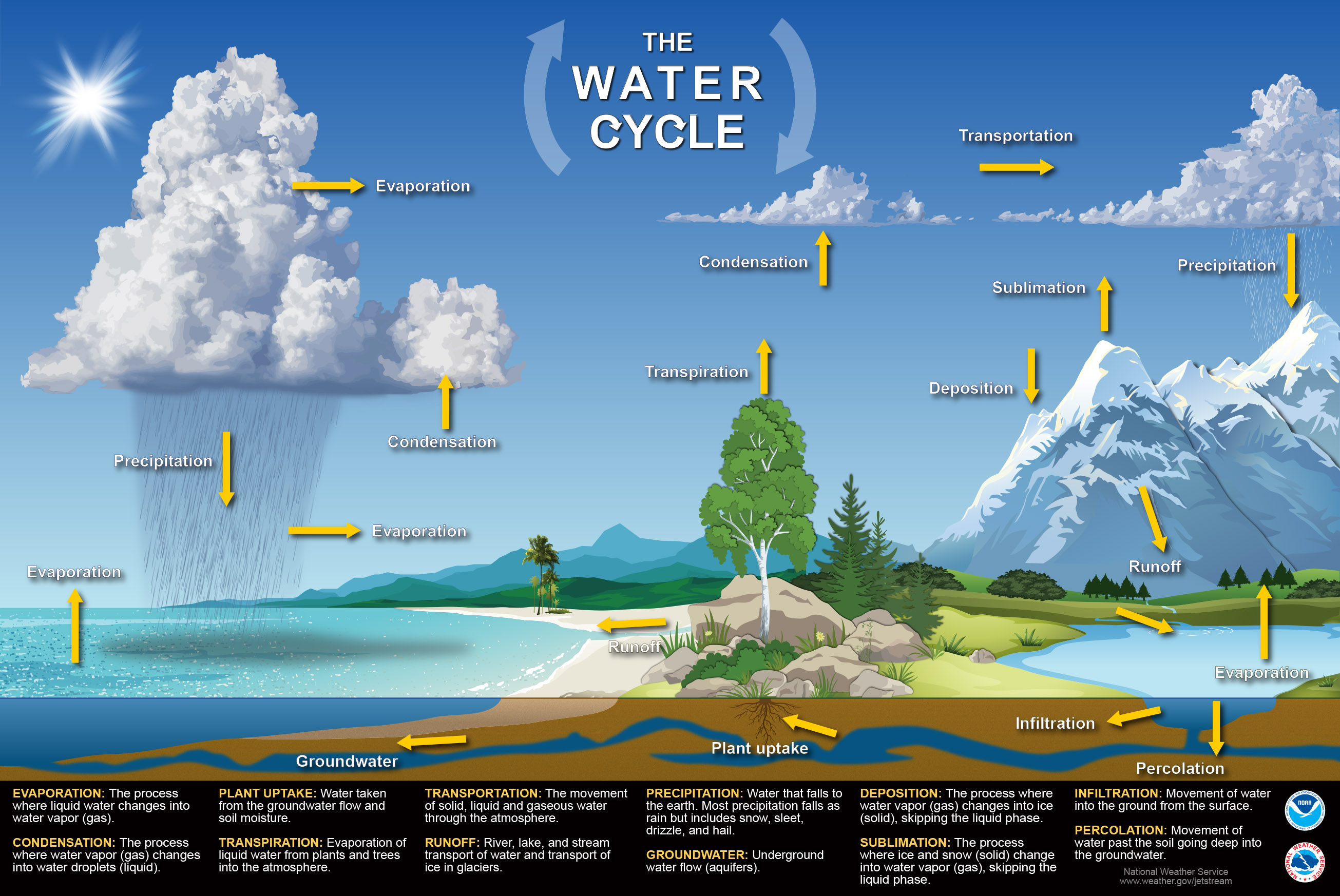
Water Cycle U.S. Climate Resilience Toolkit
Click the link below to view an interactive diagram for the water cycle. http://water.usgs.gov/edu/watercycle-kids-adv.html _ Click on the link below to view all of the parts of the water cycle. This page will get you started with "Atmosphere." See the complete list on the left side of the webpage. Summary of the Water Cycle!

Water Cycle Diagram And Explanation Design Talk
The water cycle, or hydrologic cycle, is driven by the Sun's energy. The sun warms the ocean surface and other surface water, causing liquid water to evaporate and ice to sublime—turn directly from a solid to a gas. These sun-driven processes move water into the atmosphere in the form of water vapor.
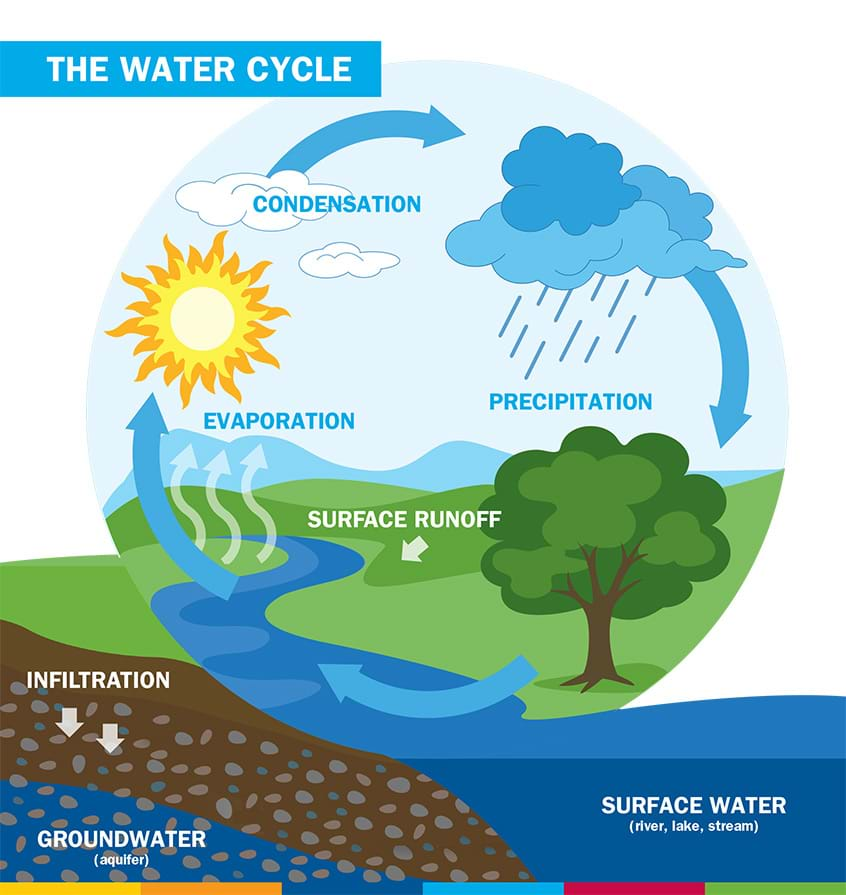
Water Cycle Unit TeachEngineering
Water Cycle. Water cycle, also known as the hydrologic cycle, involves a series of stages that show the continuous movement and interchange of water between its three phases - solid, liquid, and gas, in the earth's atmosphere. The sun acts as the primary source of energy that powers the water cycle on earth.
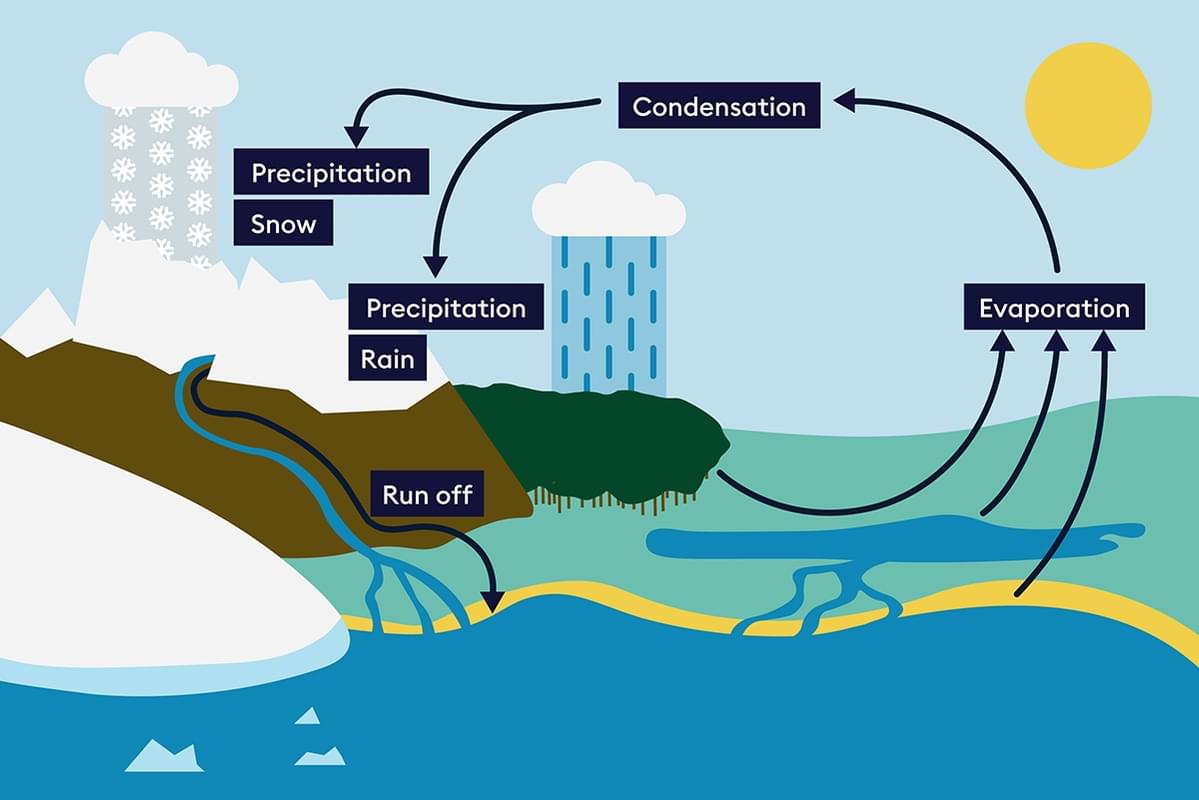
Why is the water cycle important? Encounter Edu
Diagram depicting the global water cycle. The water cycle, also known as the hydrologic cycle or the hydrological cycle, is a biogeochemical cycle that describes the continuous movement of water on, above and below the surface of the Earth.The mass of water on Earth remains fairly constant over time but the partitioning of the water into the major reservoirs of ice, fresh water, saline water.